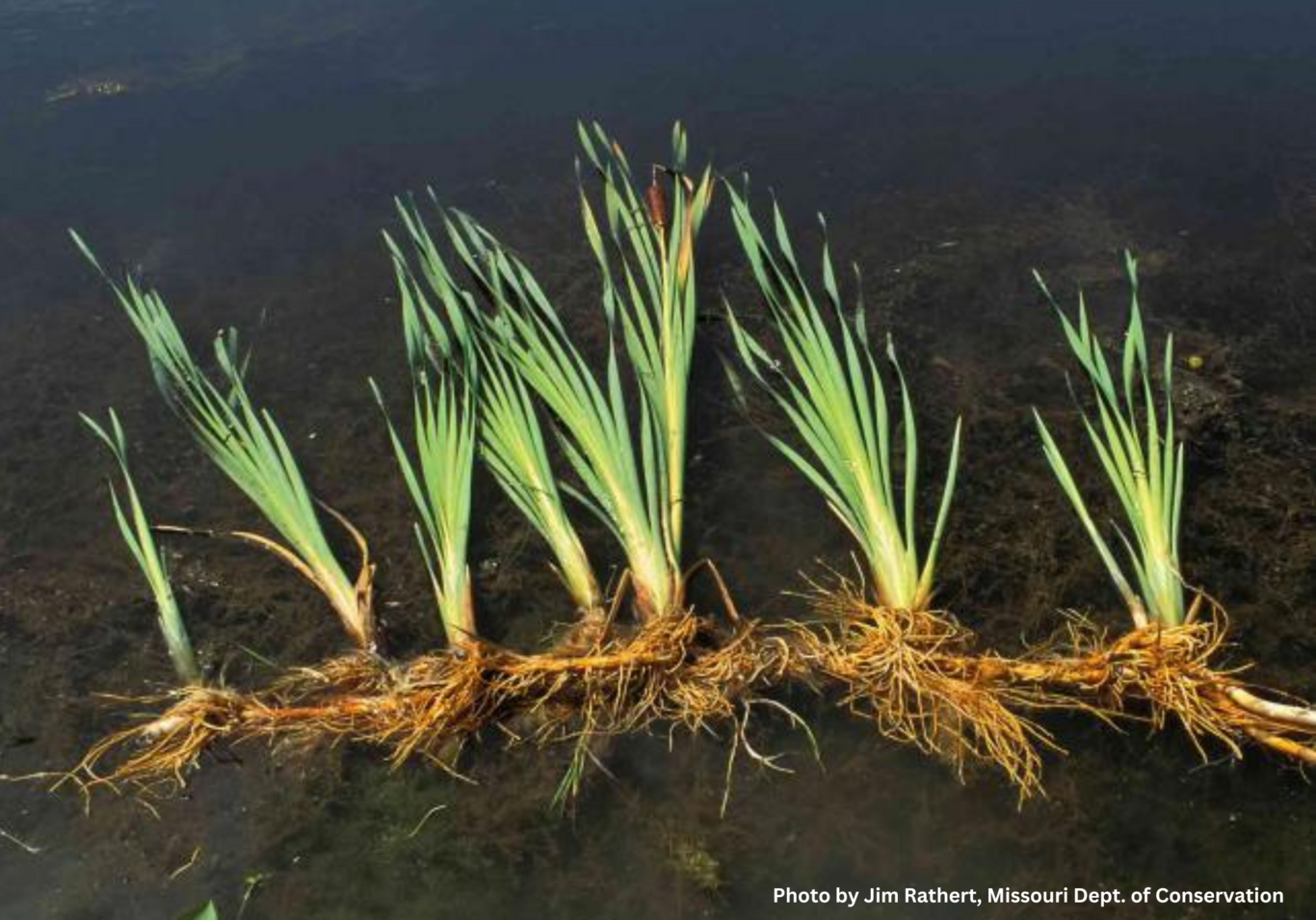Lake Look - Native Aquatic Plants in Winter
The time of year for winterization is upon us: we seal windows, run heaters, open boxes of coats and mittens, and dust off sleds and skis. These are all strategies that humans in colder climes like the Lake Champlain basin employ for winter survival and enjoyment. But what about the lake’s vegetative life? How have the native aquatic plants of Lake Champlain evolved to survive winter?
To understand how these plants adapted to the harsh cold, periodically frozen surface, and shortened day length of Lake Champlain winters, we first need some context about how these plants evolved. The first forms of life on Earth were aquatic, and multicellular organisms eventually colonized land. It may follow that aquatic plants that we see today are more ancient than their terrestrial counterparts, but most aquatic plants evolved from terrestrial plants that adapted to underwater or partially submersed conditions. Aquatic plants primarily undergo vegetative reproduction, which means a new plant grows from a fragment or part of a parent plant asexually rather than through flowers and seed production. This makes sense because flowers almost always need to be above water to be pollinated. But, since aquatic plants evolved from terrestrial plants, many still have the capability to produce flowers and will do so in the right conditions, even though the asexual method is more commonly employed.

The lack of seed production from most aquatic plants means that the majority of these plants are perennial—they go dormant in the winter rather than releasing seeds and dying like an annual plant. Different plants employ different strategies to accomplish this. Plants such as eelgrass (Vallisnera americana) use their rhizomes, or underground horizontal stems that connect the shoots of individual plants. In winter, the rhizomes stay intact in the lakebed soil while the leaves of the plant die back, which is why beaches can often be awash with eelgrass fragments in late fall. Another plant that makes use of rhizomes to overwinter is the yellow pond lily (Nuphar varigata). The lily is easily recognizable by the floating pad-like leaves and iconic yellow flowers that peek above the water in summer, but most of the plant’s biomass is in its long underwater stems that attach to an extensive underground network of rhizomes in the lake bottom. As the leaves slow in photosynthesis as fall unfolds, carbohydrates are stored in the rhizomes and the leaves die back while the plant becomes dormant. In spring, those same carbs mobilize to produce leaves again. Broadleaf cattails (Typha latifolia) have rhizomes too—in the fall, the leaves and the stalks drop. The dead fragments create important habitat for a variety of invertebrates and small fish, while the rhizomes live underground.

Another plant adaptation for winter is the use of tubers. Tubers are starchy lumps formed along rhizomes. Arrowhead plants (Saggitaria latifolia), also known as wapato, produce potato-like tubers (which explains their additional nickname of “duck potato”) that allow the plant to survive winter while their leaves die back. The tubers are important food sources for wildlife and Native American communities as they are also edible for humans. The arrowhead tubers remain under several inches of muck in wetlands and lakeshore edges to safely store carbohydrates over the winter months. When the days grow longer, those carbohydrates shift from the tubers as energy to grow leaves. When enough energy is obtained though photosynthesis, arrowhead plants start forming tubers again in mid-summer to cycle through the year once more.

Rhizomes and tubers are both common in the terrestrial plants from which the aquatic plants we’re familiar with evolved—think of grass rhizomes and sweet potato tubers. One structure that is an adaptation specifically for aquatic plants is the turion. Turions are storage organs like tubers but are formed from buds rather than rhizomes. They are different from regular buds because they are nearly leafed out, but instead of expanding, they remain in a tight globule of dense plant mass, from which no stem has elongated. Bladderworts (Utricularia spp.), the fastest carnivorous plant in the world, develop these structures for winter. The high density of the turion causes them to sink. Only bladderworts in cold climes form turions. Some duckweed species (Lemna spp.), Watermilfoil (Myrophyllum spp.)--the most common and well-known of which are the invasive Eurasian watermilfoil, but there are several native species in the lake as well--and pondweeds (Potomageton spp.) also produce turions.

Not all plants in Lake Champlain are perennials that maintain underground structures to survive winter. Some die every year as annuals, after releasing winter-hardy seeds carrying on their genetic information into the spring. One example is Northern wild rice (Zizania palustrius). These plants produce a long, narrow cylindrical seed that is dropped in late summer and early fall. The seeds drop headlong and will typically wind up burrowed several inches in the mud. From there, wild rice completely dies after frosts and their seeds weather the winter dormant. Some will germinate the following spring; however, they are capable of remaining dormant for several years and still growing successfully down the line.

While Lake Champlain can seem like a harsh environment for any living thing as the temperatures drop, the winds pick up, and the edges freeze, the remarkable plants who call it home have developed tricks over their millennia of evolution to survive the winter waterscape.
Lake Look is a monthly natural history column produced by the Lake Champlain Committee (LCC). Formed in 1963, LCC is a bi-state nonprofit that uses science-based advocacy, education, and collaborative action to protect and restore water quality, safeguard natural habitats, foster stewardship, and ensure recreational access. You can join, renew your membership, make a special donation, or volunteer to further our work.